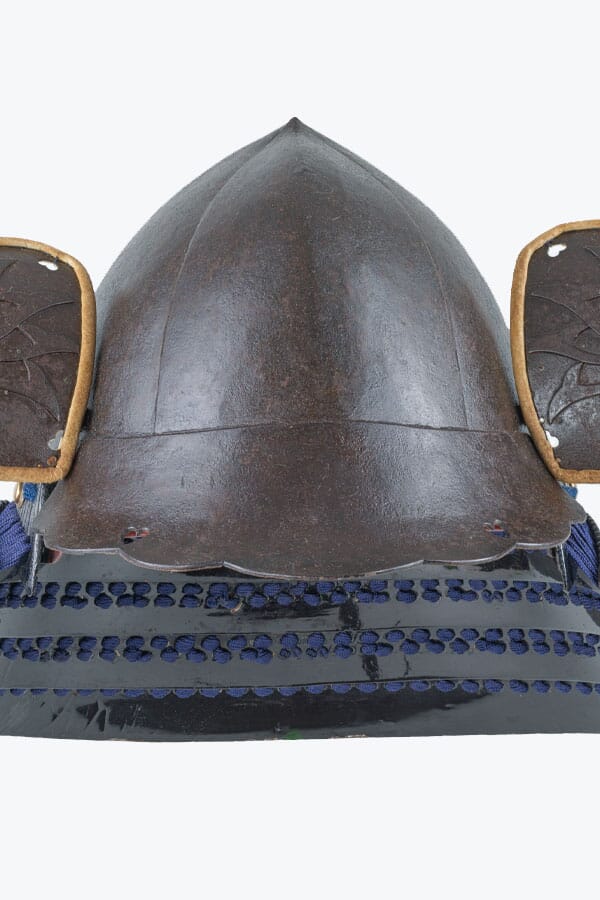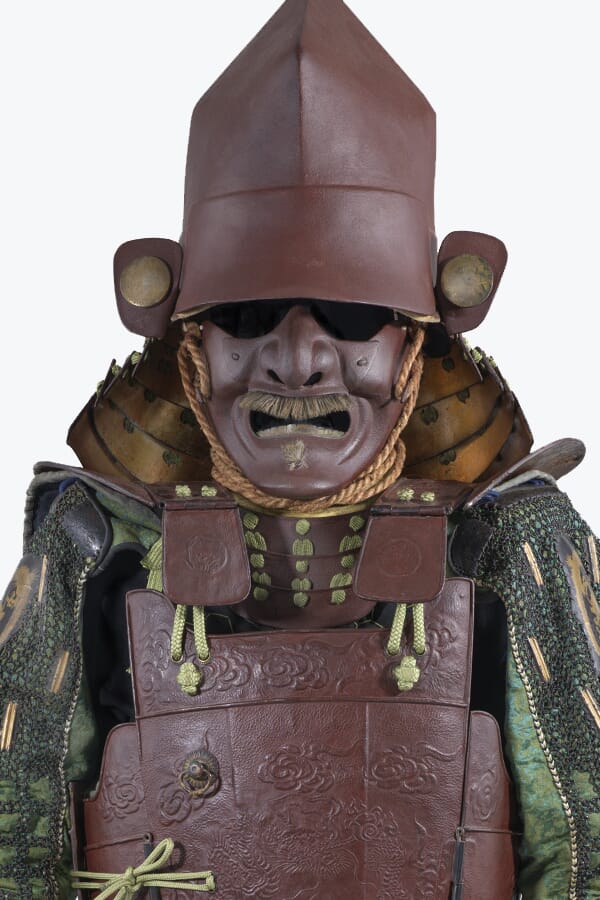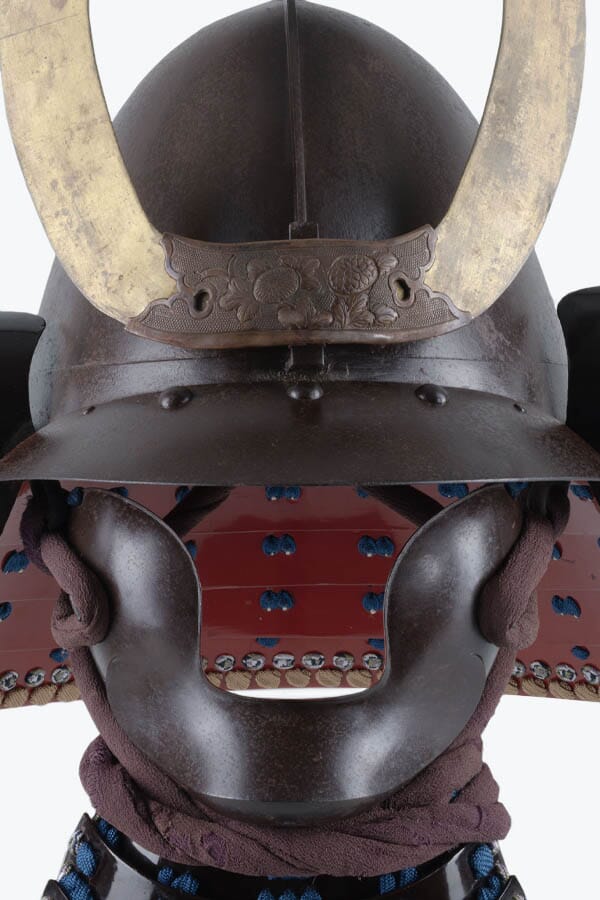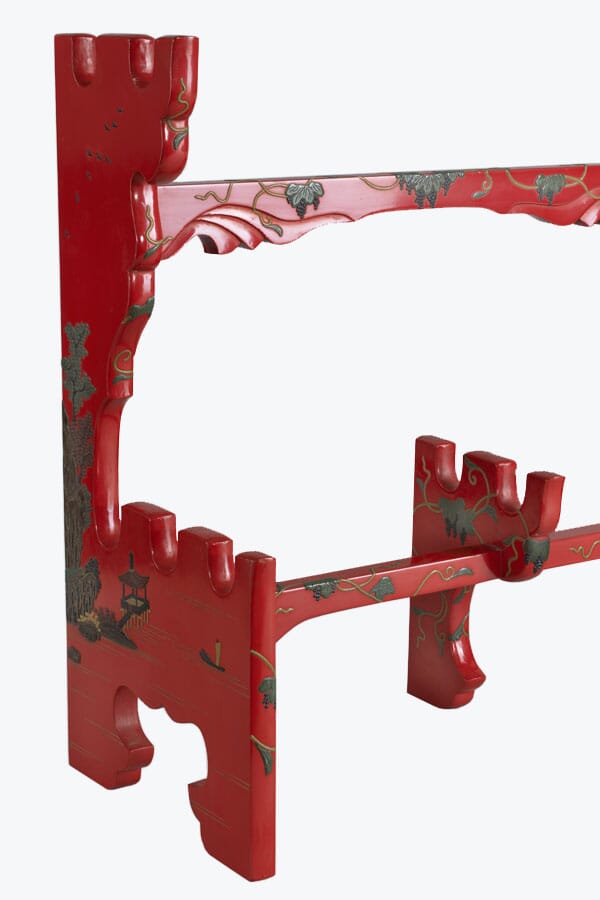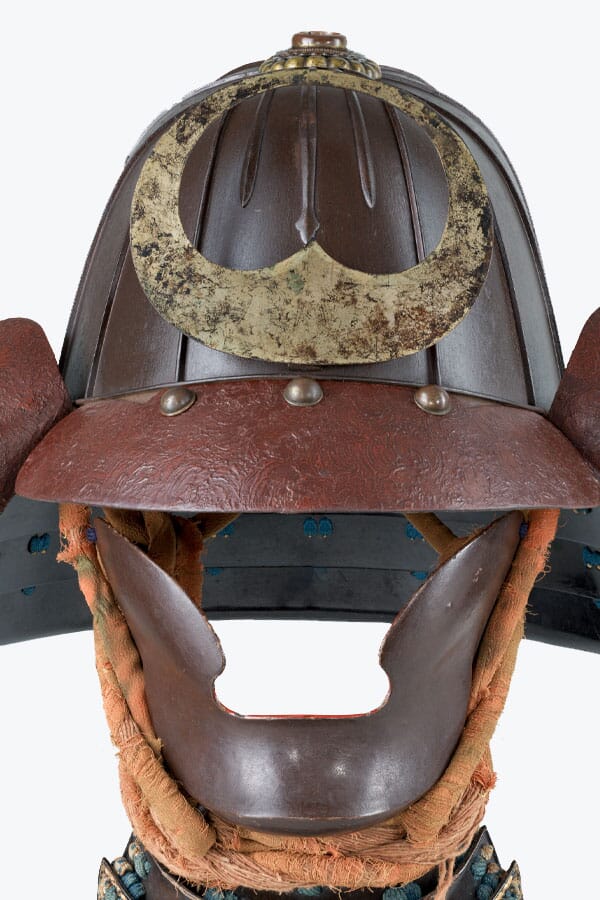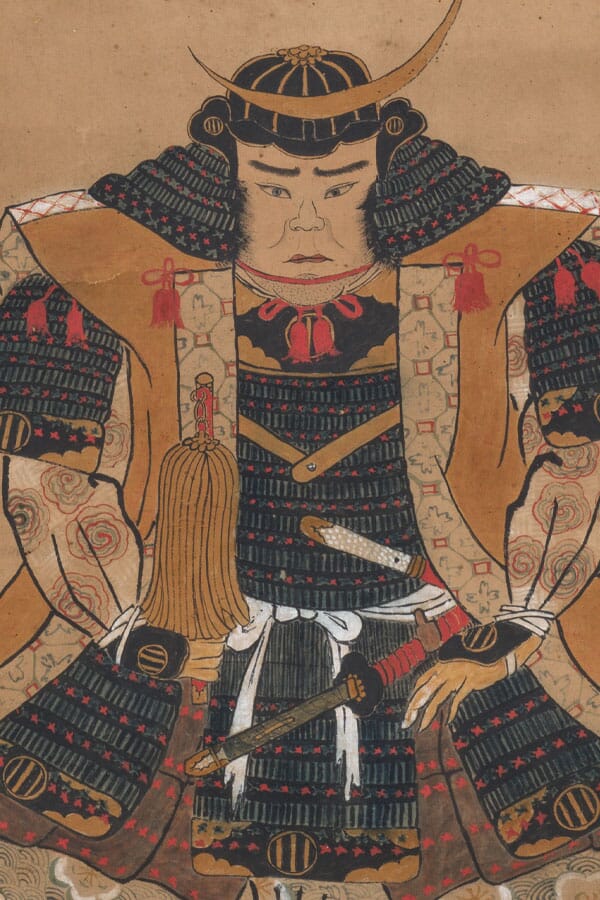Full Suits I Masks I Helmets I Other Items
Saotome Gusoku
Price upon request
Edo Period 18th Century
![]()
Description
Medium: Iron, rawhide, lacquer, silk, copper, gold
School: Saotome
Provenance: Private collection Japan / Private collection UK
Exhibition: LAPADA Fair London 2024 / Decorative Fair London 2025
This fine suit of Japanese armour dates to the mid to late Edo period (1603–1868). Though strong and fully functional, it was most likely intended for ceremonial purposes rather than the battlefield, reflecting the age of peace when armour became as much a symbol of refinement and prestige as of martial necessity. In contrast to the bold and oversized decoration of earlier Warring States armour, which was designed to be recognisable from a distance, this set exemplifies the Edo period’s emphasis on close detail and artistic embellishment.
The armour is constructed principally from russet iron, a highly desirable finish during this period. Its use demonstrated wealth and status, as the plates are fashioned from solid ita-mono iron rather than the smaller riveted plates lacquered over in more common suits. The breastplate, or mune-ita, together with the fukigaeshi winglets of the helmet, are decorated with finely stencilled egawa deer hide, lending further richness to the set.
The kabuto helmet is a particularly distinguished feature. Signed by a Saotome smith, it is fitted with a shikoro neck guard, the lames of which match those found on the tare throat guard, the sode shoulder guards, and the gessen armoured skirt. These sections have been gilded and fashioned in the style of kiritsuke, imitating the appearance of hon-kozane linked scales. The helmet bears copper kuwagata maedate, surmounted by a superb gilded wooden carving of a shishi lion dog. Completing its ensemble is a rare umajirushi battle standard in the form of a gilded wooden half-moon, together with its original ukedutsu flag holder.
The menpō face mask, also of russet iron, retains its aged white yak hair moustache (kuchi-hige), giving it both character and a vivid sense of presence. The sangu, comprising the kote arm guards, haidate apron and suneate shin guards, is unified through the use of a matching iri-ji brocade fabric. Both the kote and the haidate incorporate the Maeda family crest woven into the chain mail, a crest also displayed proudly on the fukigaeshi of the helmet.
As a whole, this armour is a remarkable testament to Edo-period craftsmanship, balancing martial robustness with refined artistic detail. The signed helmet, the incorporation of the Maeda clan crest, and the completeness of its surviving elements make it an exceptional and highly desirable piece for collectors and historians alike.
If you would like further information or photographs of this item please use the contact form below
